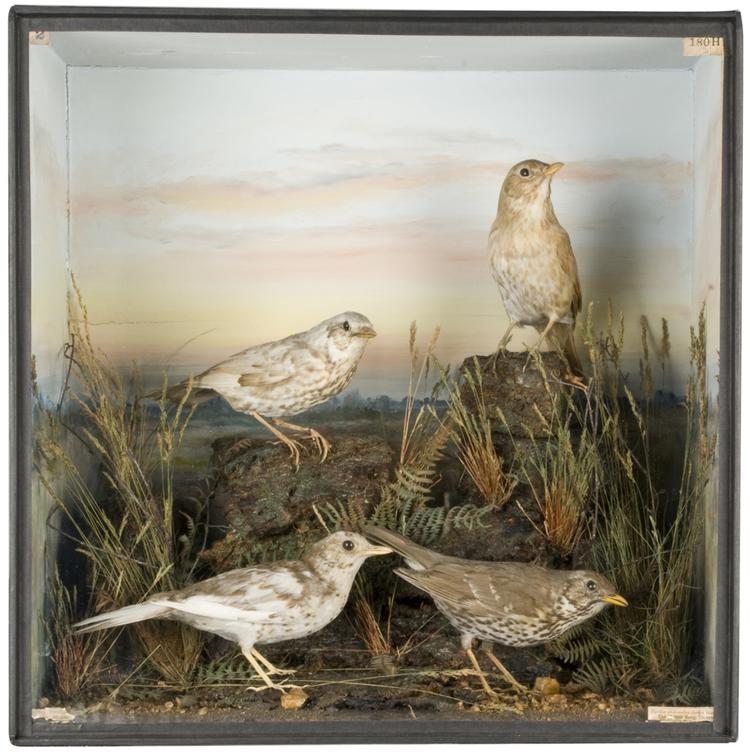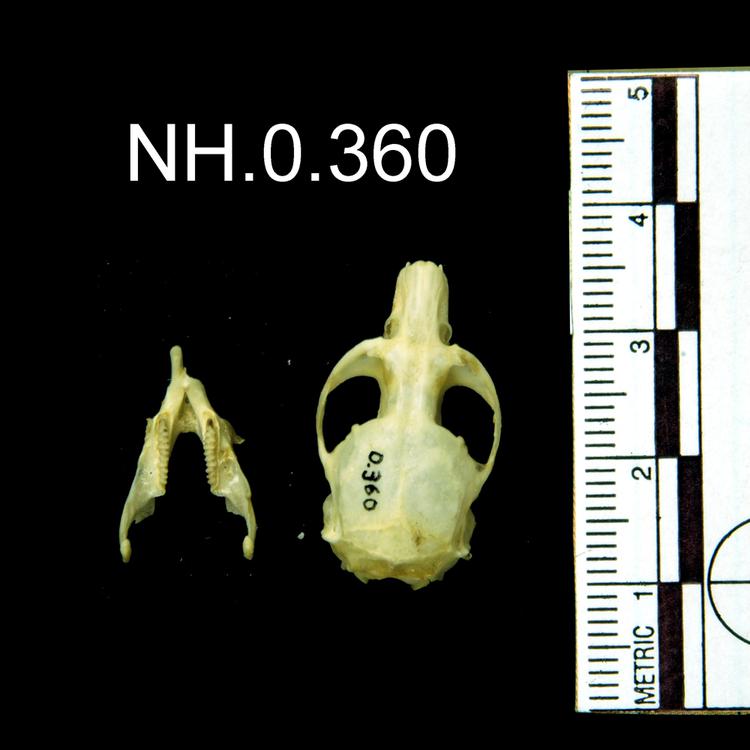
Skeletal specimen of a frog in a case.
The common frog moves between water and land and has special adaptations to help it survive in both areas. It is green and brown in colour to help it blend in with its habitat. The dark colour also helps the frog absorb heat from the sun. Frogs are ectothermic and cannot keep themselves warm so they rely on external heat to keep their body temperature consistent. Webbed toes help frogs to swim and also help them navigate fast-flowing streams. Frogs have strong legs for swimming an djumping. They also have sticky pads on their feet to help them move on slippery surfaces. Frog skin is permeable for gas exchange so it can 'breathe' when oxygen demand is low, such as when hibernating in the winter. Frogs hibernate in the debris at the bottom of ponds or in cool moist conditions under logs or other plant debris.






